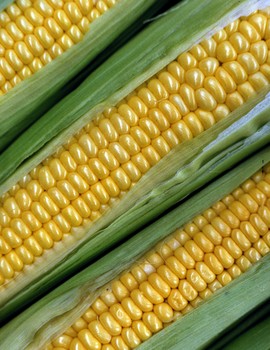How to Grow Corn
Corn is one of the staple crops in the world, making the knowledge of how to grow corn valuable. Even before the first European settlers came to America, natives were planting and harvesting maize, a vegetable similar to corn. Learning how to grow corn can be an interesting way to gain insight into the early ways of living in America.
Also, growing corn gives you the opportunity to obtain fresh and high quality crops, outside lower-gauge grocery store varieties of corn. Learning how to grow corn can also be considered a good hobby and the nature of corn growth lends itself to intermediate gardeners and agriculture enthusiasts.
Recently, the development of corn as a potential fuel source has begun to make it even more interesting to many planters around the country. The process of using corn as fuel is complicated and expensive when considered on the small grower level, but you can assume that the science of turning corn into fuel should progress, making corn-for-fuel more viable and inexpensive in the future.
The amount of corn that you grow in your garden or backyard won’t be enough to act as a fuel source replacement to fuels like gasoline, at least in the foreseeable future. But if the price of corn increases to account for its use as a fuel commodity, growing even a small amount of corn for consumption should be worth your time, when putting food on the kitchen table.
Preliminary Corn Concerns
Corn is the common name for any of the cereal plants like maize, wheat and barley. Corn products have many applications and usages beyond being eaten as a food, but people love to eat corn, on the cob or off.
Corn as a Product
Corn is the most widely grown crop in America today, even above the popular tobacco. There have been many varieties and offshoots of corn species over the centuries, though many breeds have begun to homogenize into crossbreeds and more conventional types. Despite that, minor corn varieties like the smaller sweet corn plant remain a popular choice for growers around the world.
Learning how to grow corn is not hard, though you’ll need to obtain certain important tools and materials in order to insure success in your project. It is best to grow larger crops like corn in some sort of outdoor garden, especially since corn survives in most temperate to moderate climates.
However, it’s not impossible to plant corn inside of your home, especially if you have a greenhouse or even a basement with some sort of lighting and irrigation system. You’ll need to get a spade, soil, watering can, pots, plant containers and manure or soil enrichment product.
Corn Growing

How to Grow Corn
Corn is best grown outdoors, as the crop is larger than most conventional houseplants which yield fruit or buds. Corn requires rich soil, good drainage and a moisture-retentive base. This contrasts with many plants we’ve covered, like the common herb, aloe vera, which requires almost the exact opposite base.
As with many other plants, if you buy seeds, expect to wait a while (5-8 weeks) after purchase and planting to see any growth progress or development. If you have a shorter window of time with which to grow, you can use developed corn plants as your seed.
Planting Corn
Mix your soil base to a ratio of about ½ soil and ½ soil enhancement product or fertilizer. Till the base moderately with your spade.
Sow the seeds about an inch or ½ inch deep, about 3 to 4 inches apart from each other. It’s not a bad practice to put several plants together in pods, because this will ensure that at least one plant will come to fruition, if the others fail to take. As the plants grow, be sure to give them at least one inch of water a week, but administer the water horizontally in flow.
If you water corn from above, you are likely to wash away valuable pollens. You can simply use your watering can, flipped over on its side and close to the soil, instead of the conventional way of pouring water from above at a distance.
The corn plants develop over 3 to 4 weeks. Trim the stalks and keep them about 6” to 12” apart during the growth phase. When the plants reach 10”, nurture them with another mixture of soil and soil enhancement or fertilizer.
Repeat this process when the plant reaches both 18” and as the tassels of the plant appear. Corn is ready to harvest when the husks reach a dark green color. The silks of the plant should be dry and brown, and the kernels should visibly reach the top of the ear of corn.
This will occur about twenty days after silks appear on the plant. For expedited growth, be sure to keep parts of old plants after you harvest. Use these, as you don’t want to have to start from seeds the next time you want to plant some corn crops. Using the plant, instead of a seed, saves a lot of time and preparation when growing corn.
